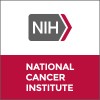Combination Chemotherapy, Radiation Therapy, and Gefitinib in Treating Patients With Stage III Non-Small Cell Lung Cancer
Adenocarcinoma of the Lung, Adenosquamous Cell Lung Cancer, Bronchoalveolar Cell Lung Cancer

About this trial
This is an interventional treatment trial for Adenocarcinoma of the Lung
Eligibility Criteria
Inclusion Criteria: Histologically or cytologically documented non-small cell lung cancer (NSCLC), including squamous cell carcinoma, adenocarcinoma (including bronchoalveolar cell), and large cell anaplastic carcinoma (including giant and clear cell carcinomas) ELIGIBLE DISEASE STAGES: Inoperable IIIA and selected IIIB Generally, patients entered must be considered unresectable or inoperable; patients with T1 or T2, N2 disease are eligible; patients with T3, N2 or T4, N0-N2 disease are eligible if based on the closeness to the carina, invasion of the mediastinum or invasion of the chest wall; patients with T3, N0-N1 disease are not eligible; patients must be M0 (M1 patients are not eligible) Patients with direct invasion of vertebral body are ineligible Patients with tumors adjacent to a vertebral body are eligible, unless there is demonstrable bone invasion, as long as all gross disease can be encompassed in the radiation boost field in accordance with the homogeneity criteria Patients with contralateral mediastinal disease (N3) are eligible if all gross disease can be encompassed in the radiation boost field in accordance with the homogeneity criteria; patients with scalene, supraclavicular, or contralateral hilar node involvement are ineligible Patients with a pleural effusion, which is a transudate, cytologically negative and non-bloody, are eligible if the radiation oncologist feels the tumor can be encompassed within a reasonable field of radiotherapy. Patients with exudative, bloody, or cytologically malignant effusions are not eligible; if a pleural effusion can be seen on the chest computed tomography (CT) but not on chest x-ray (CXR) and is too small to tap, the patient will be eligible; a pleural effusion appearing only after a thoracotomy or other invasive thoracic procedure was attempted will not make a patient ineligible PATIENTS MUST HAVE MEASURABLE DISEASE Lesions that can be accurately measured in at least one dimension (longest diameter to be recorded) as >= 20 mm with conventional techniques or as ≥10 mm with spiral CT scan Lesions that are not considered measurable include the following: Bone lesions Leptomeningeal disease Ascites Pleural/pericardial effusion Abdominal masses that are not confirmed and followed by imaging techniques Cystic lesions Tumor lesions situated in a previously irradiated area PRIOR THERAPY >= 2 weeks since formal exploratory thoracotomy. No prior chemotherapy or radiation therapy for NSCLC CTC performance status 0-2 No "currently active" second malignancy other than non-melanoma skin cancers; patients are not considered to have a "currently active" malignancy if they have completed therapy and are considered by their physician to be at less than 30% risk of relapse Non-pregnant and non-nursing because of significant risk to the fetus/infant No patients with uncontrolled intercurrent illness including, but not limited to, ongoing or active infection, symptomatic congestive heart failure, unstable angina pectoris, cardiac arrhythmia, or psychiatric illness/social situations that would limit compliance with study requirements No patients with chronic gastrointestinal disorders including liver disease, diarrheal or emetic disorders, or malabsorptive conditions which could worsen toxicity or limit efficacy of ZD1839 No cytochrome P450 3A4 (CYP3A4) inducers within 7 days prior to starting protocol therapy and while on protocol treatment. CYP3A4 inducers: phenytoin, carbamazepine, barbiturates, rifampicin, dexamethasone, and St John's Wort; single doses of dexamethasone used as an antiemetic are permitted No human immunodeficiency virus (HIV)-positive patients receiving combination anti-retroviral therapy Granulocytes >= 1,500/ul Platelets >= 100,000/ul Calculated creatinine clearance >= 20 cc/min Bilirubin < 1.5 mg/dl Aspartate aminotransferase (AST) (serum glutamic oxaloacetic transaminase [SGOT]) < 2 x upper limit of normal (ULN)
Sites / Locations
- Cancer and Leukemia Group B
Arms of the Study
Arm 1
Arm 2
Experimental
Experimental
Stratum I (gefitinib, radiotherapy)
Stratum II (gefitinib, radiotherapy, chemotherapy)
Patients receive gefitinib orally (PO) daily for 7 weeks. Patients also undergo concurrent radiotherapy once daily 5 days a week for 7 weeks. Patients then receive gefitinib PO daily in the absence of disease progression or unacceptable toxicity.
Patients receive gefitinib and radiotherapy as in stratum I concurrently with paclitaxel IV over 1 hour followed by carboplatin over 30 minutes once weekly for 7 weeks. Patients then receive gefitinib PO daily in the absence of disease progression or unacceptable toxicity.
Outcomes
Primary Outcome Measures
Secondary Outcome Measures
Full Information
1. Study Identification
2. Study Status
3. Sponsor/Collaborators
4. Oversight
5. Study Description
6. Conditions and Keywords
7. Study Design
8. Arms, Groups, and Interventions
10. Eligibility
12. IPD Sharing Statement
Learn more about this trial
